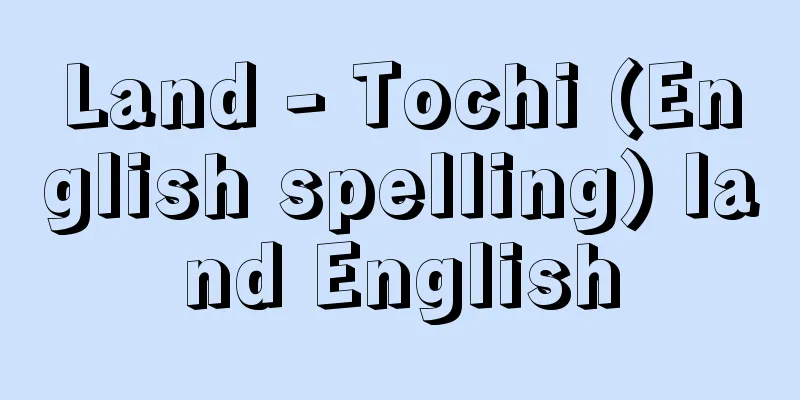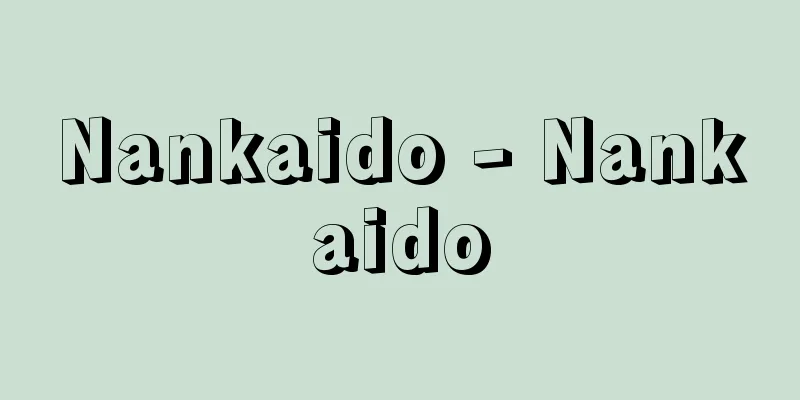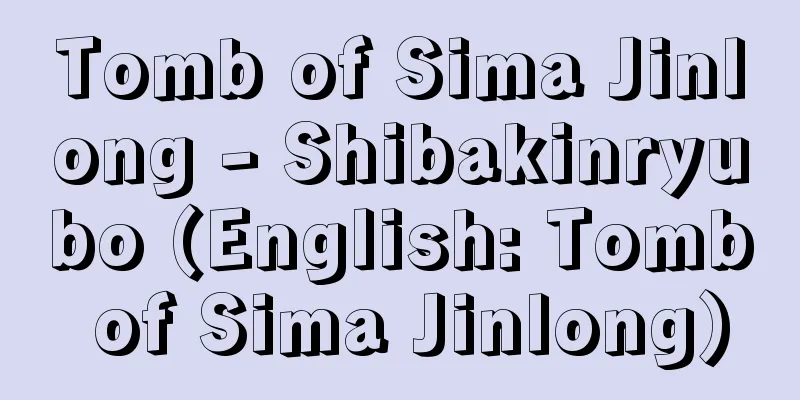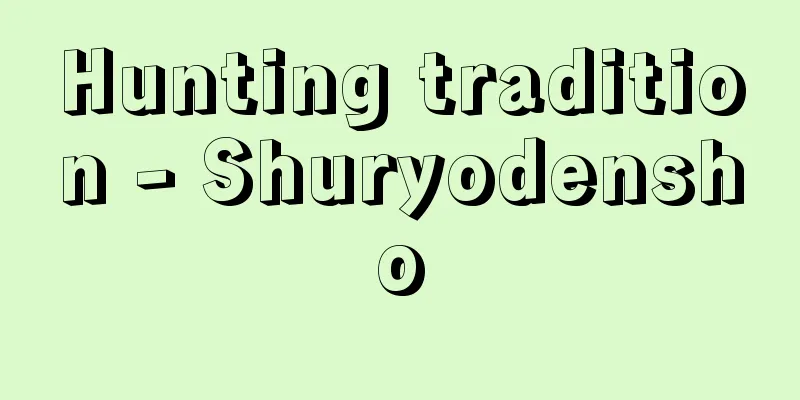Land - Tochi (English spelling) land English

|
It refers to a certain portion of the Earth's surface, containing food and forest resources above ground and mineral resources underground, as well as water. From the perspective of the production of wealth, it corresponds to labor and is its source. In other words, what humans do in production is simply to change the form of the land (nature) and create materials (wealth) that are useful to humans. Moreover, in doing so, they are constantly supported by natural forces. For this reason, labor is positioned as the father of wealth, and land as its mother. What should be particularly noted is that land is not a product of labor, but its prerequisite, and is a finite entity compared to labor, which has the potential for infinite accumulation. Land exists as a general object of human labor, such as cultivated land, felled trees, and extracted ores. In that sense, it has a position as the primary object of labor in the labor process. At the same time, minerals and forest resources are the fundamental source of labor means, and farmland (soil) in agricultural production is a kind of container for plant growth and is itself a labor means. Land is also positioned as a general labor means in that it provides the worker with a place to stand and a place to work, providing the fundamental necessary condition for the labor process to be carried out. Humans' natural historical necessity to seek an abundance of wealth has led them to recognize the objective laws of land (nature) and, by applying these laws, have increased their power to transform the land. However, human rule over land is different from God's rule. Human flesh, blood, and brains originate from the land (nature) and are contained within it. Human rule over land is the correct use of natural laws insofar as humans are also living organisms in the natural world. And as land is a finite entity, it is required that it be properly improved and preserved from the perspective of the continuation of successive generations of humanity. Furthermore, the fact that the Earth's surface is one connected unity is an important attribute of land. [Masaru Hoshi] Legal LandLand itself consists of an infinitely continuous surface and the components below it, but to become a "thing" that is the subject of real rights, only a certain portion of the surface must be defined. Land is an element of agricultural production, and is a permanent commodity that has the characteristic of providing space for other things, so it is treated differently than movable property. Particularly under the feudal system of the Middle Ages, status control was linked to land control, and the lord's ownership of land was not simply private control over the land, but was the basis for political and public law control, so it was considered an extremely important asset. For this reason, the transfer and use of land was subject to legal restrictions that were completely different from those for movable property. In modern times, political and public law control was concentrated in the hands of the state, all such restrictions on land were abolished, and free private land ownership was established. As a result, land became a commodity that could be freely traded in the same way as movable property, but due to its characteristics and importance as property, it is still subject to different legal regulations from movable property today. Land is an infinite contiguous area and is difficult to make the subject of rights as it is, but by artificially demarcating and dividing a portion of it, it can be treated as an individual object. Each piece of land divided in this way is called a plot of land, and each plot is given a land number and recorded in the land registry. Furthermore, with regard to any changes in land rights, registration is a requirement for asserting rights against third parties (Civil Code Article 177). Landowners are free to use, profit from, and dispose of their land within legal restrictions (Civil Code Article 206). Furthermore, land ownership extends above and below the land, within legal restrictions (Civil Code Article 207). The Civil Code only prescribes restrictions based on neighboring relationships as a restriction on a landowner's ownership, but there are many other restrictions imposed by special laws, and these restrictions have been increasing significantly in recent years. Even if there are no legal restrictions, if the use and profits are an abuse of rights, such use and profits are not protected by law. Landowners can of course use the land themselves, but can also allow others to use the land in return for compensation by establishing surface rights, emphysema rights, leasehold rights, etc. In such cases, a difficult problem in modern society is how to reconcile the landowner's interest in "ownership" with the user's interest in "use." Furthermore, the issues facing land policy are complex and diverse. The most important issue has often been the concentration of population in cities and the resulting rise in land prices, but in recent years, the issue has taken on a new form, and it has become important to promote the effective use of land on the one hand, while at the same time dealing with the rise in land prices on the other. For this reason, there is a call for a comprehensive land policy with a broader perspective than before, and new ideas and methods for restricting land ownership are being sought. [Yasuyuki Takahashi] FolkloreFolk customs regarding land are intertwined in various fields such as politics, economy, society, and labor, and there are significant differences depending on the social structure and the era. There may have been feelings toward the landscape and emotions felt by the landscape, but in the long term, it has progressed in the direction of use and occupation. Naturally, the consciousness toward the land would have been different between those who lived a non-settled life such as hunters and nomads and those who lived a settled agricultural life. In Japan, a settled consciousness and sensibility was established during the long agricultural life, and there was even a tendency to be wary of and look down on wandering people as "people of unknown origin." This promoted hometown love and solidarity of the living community, and led to a strong awareness of the inside and outside of the village. Therefore, outside the microcosm of the village, it was exclusive, epidemics and evil spirits were prevented at the village border, and it was only up to the village border that insects and epidemics were sent away. Regarding land use, efforts were made to improve productivity regardless of whether it was mountainous, flat, or on the shore, and various labor practices were born. In the past, there was a lot of common land and iriai land. A common right is the right to jointly enter a certain piece of land and make a profit from it, but confusion arose in various places due to the difference between this customary law and modern written law. There is also a legend of the Ikiaizaimen, in which representatives from both sides set out at the same time to decide the village border, and the place where they met was decided. There was also a custom when searching for a place to dry seaweed or kiriboshiimo on common land, where the person who arrived first would erect poles and surround the land, and be granted possession. On the other hand, there was also a sense that land was something that was handed down from divine spirits, so the god of the earth was worshiped within the compound, and a ground-breaking ceremony was held before the construction of a house. When digging a grave, coins were placed at the four corners to "buy land" from the divine spirits. Land is property, and it is said that the "toku" in the family headship means land. [Shoji Inoguchi] [Reference items] | | | | |Source: Shogakukan Encyclopedia Nipponica About Encyclopedia Nipponica Information | Legend |
|
地球の表面の一定部分のことで、地上に食糧、森林資源、地下に鉱物資源をもち、水をも含む。富の生産という角度からみると、労働と対応して、その源泉をなしている。すなわち、人間が生産においてなすことは、土地(自然)の形態を変化させて、人間にとって有用な物質(富)をつくりだすのにすぎない。しかも、その際、絶えず、自然力に支えられているのである。だから、労働は富の父であり、土地はその母である、と位置づけられる。とくに注意すべきは、土地は、労働の生産物でなく、その前提であり、無限の蓄積の可能性をもつ労働に対して、有限な存在であることである。 土地は、耕耘(こううん)される耕地、伐採される木、採取される鉱石など、人間労働の一般的対象として存在する。その意味では、労働過程において第一次的労働対象としての位置をもっている。と同時に、鉱物、森林資源は労働手段の根源的な源泉であるし、農業生産における農地(土壌)は、植物の生育にとっての一種の容器であり、それ自体一つの労働手段でもある。また、土地は、労働者に立つ場所や、仕事の場を与えることにおいて、およそ労働過程が遂行されるための根本的必要条件を提供している点において、一般的な労働手段としても位置づけられる。 富の豊かさを求める人間の自然史的必然は、土地(自然)の客観的法則性を認識し、それを応用して、土地を変革する力能を高めてきた。しかし、人間の土地に対する支配は、神の支配とは異なる。人間の、その肉と血と脳髄とは、そもそも、土地(自然)から発し、その中にある。人間の土地に対する支配は、自らも自然界の一生物である限りでの自然法則の正しい利用である。そして有限な存在である土地に対しては、人類の相連なる世代永続の観点から、正しく改良保全されることが要請される。また、地球の表面が一つにつながっていることも、重要な土地の属性である。 [保志 恂] 法律上の土地土地それ自体は、無限に連続する地表およびその下の構成部分からなるが、物権の対象である「物」となるには、地表の一部を一定範囲に限って定める。土地は農業生産の要素であるとともに恒常的であり、他の物に場所を与える特質を有する財貨であるから、動産と比べていろいろ異なった取扱いを受ける。とくに中世の封建制度のもとにおいては、身分的支配が土地支配と結び付き、領主の土地の領有は、単に私的に土地を支配するだけでなく、政治的・公法的な支配の基礎となっていたので、きわめて重要な財産とされた。そのため、土地の移転・利用などについては動産とはまったく異なる法的規制が行われていた。 近代になって、政治的・公法的な支配は国家の手に集中され、土地に付着していたそのような拘束はすべて撤廃されて、自由な私的土地所有権が確立されることになった。その結果、土地も商品として動産と同じように自由な取引の対象とすることができることになったが、その財産としての特質と重要性のゆえに、今日でも動産とは異なる法的規制を与えるのが常である。 土地は無限に連続していてそのままでは権利の対象になりにくいが、一部分を人為的に画定し、区分することによって個々の物として取り扱われることになる。そのように区分された土地のそれぞれを一筆(いっぴつ)の土地といい、一筆ごとに地番がつけられて登記簿に記載される。そして、土地の権利の変動については、登記が第三者に対する対抗要件である(民法177条)。 土地所有者は、法令の制限内で自由にその所有地を使用・収益・処分できる(民法206条)。また、土地の所有権は法令の制限内においてその土地の上下に及ぶ(民法207条)。土地所有者の所有権を制限するものとして、民法では相隣関係による制限が規定されているにとどまるが、これとは別に特別法による制限が多く、このような制限は最近では著しく増加している。法令による制限がない場合であってもその使用・収益が権利の濫用(らんよう)となる場合には、そのような使用・収益は法律による保護を受けない。 土地所有者は、土地を自ら利用することができるのはもちろん、地上権・永小作権・賃借権などを設定して、対価を得て他人に土地を利用させることもできる。その場合に土地所有者の「所有」の利益と利用権者の「利用」の利益とをどのように調和させるかが、現代社会における難問となっている。 また、土地政策の課題は複雑多岐にわたっている。その重要なものとして、都市への人口集中とそれに伴う地価の高騰があげられることが多かったが、最近では、その課題が形を変えたものであるといえるかもしれないが、一方では土地の有効利用を図るとともに、他方では地価の高騰に対処することが重要な課題となっている。そのため、従来よりいっそう広い視野にたった総合的な土地政策の必要が叫ばれ、土地所有権の制限の新しい理念と方法とが模索されつつある。 [高橋康之] 民俗土地に関する民俗は、政治、経済、社会、労働などの各分野に入り組んでおり、社会の構造や時代による違いも著しい。景観に対する感情や、景観から受ける情動もあったろうが、長期的には利用と占有の方向に進んできた。土地に対する意識は、狩猟・遊牧などの不定住生活者と、定住的な農耕生活者とでは当然に違っていたであろう。日本では長い農耕生活の間に定住的な意識や感覚が定着し、放浪的な生活者に対しては「どこの馬の骨かわからぬ」者として警戒し軽(かろ)しめる傾向さえあった。これは郷土愛や生活共同体の結束を促し、村の内と外ということを強く意識することになった。したがって村という小宇宙の外に対しては排他的で、流行病や厄神は村境で防ぎ、虫送りや疫病送りをするのも村境までであった。土地の利用に関しては、山地・平地・磯浜(いそはま)の別なく生産性の向上に努め、種々の労働慣行を生じている。以前は共有地や入会(いりあい)地が多かった。入会権は一定の土地に共同で立ち入り収益する権利であるが、この慣習法と現代の成文法との差異のため各地で混乱が生じた。村境を決めるにあたって双方の代表者が同時に出発し、出会った所に決めたという行逢裁面(いきあいざいめん)の伝説もある。共有地で海藻や切干芋(きりぼしいも)を乾燥させる場所を求めるとき、早く行った者が棒を立てて土地を囲うと占有が認められるという慣習もあった。一方、土地は神霊から譲り受けるものだという感覚もあって、屋敷内に地の神を祭り、家屋の建築に先だっては地鎮祭を行う。墓穴を掘るときも四隅に銭を置いて神霊から「土地を買う」という。土地は財産であり、家督の督は土地の意味だといわれている。 [井之口章次] [参照項目] | | | | |出典 小学館 日本大百科全書(ニッポニカ)日本大百科全書(ニッポニカ)について 情報 | 凡例 |
Recommend
Sulfoxide
…Aromatic thioethers can also be obtained by reac...
Peat moss
…General term for the moss genus Sphagnum in the ...
Camelus
...A large herbivorous animal with a hump on its ...
Kamioda (Hyogo)
...The JR Bantan Line runs along Ichikawa, and th...
Soma [village] - Soma
A village in Nakatsugaru County, southern Aomori P...
Rational function
A function that can be expressed as a rational exp...
Braidwood, RJ
...The remains of the first early agricultural vi...
Film industry
As soon as film was invented, it was commercialize...
Battle of Emboabus - Battle of Emboabus
…In the Minas Gerais region, many gold mining set...
Fujimi [city] - Fujimi
A city in southern Saitama prefecture. It was inco...
Clouds and Shadows
〘Noun〙 ("kage" means cloudy) The sky is ...
van Agt, AAM (English spelling)
...Through the multi-party system and the affluen...
Kagabushi
〘Noun〙① A kouta from the Muromachi period. It is s...
Monaco - Monako (English spelling) Monaco
A small country on the Mediterranean coast in sou...
Wessler, M.
…He studied mathematics and astronomy in Ingolsta...









